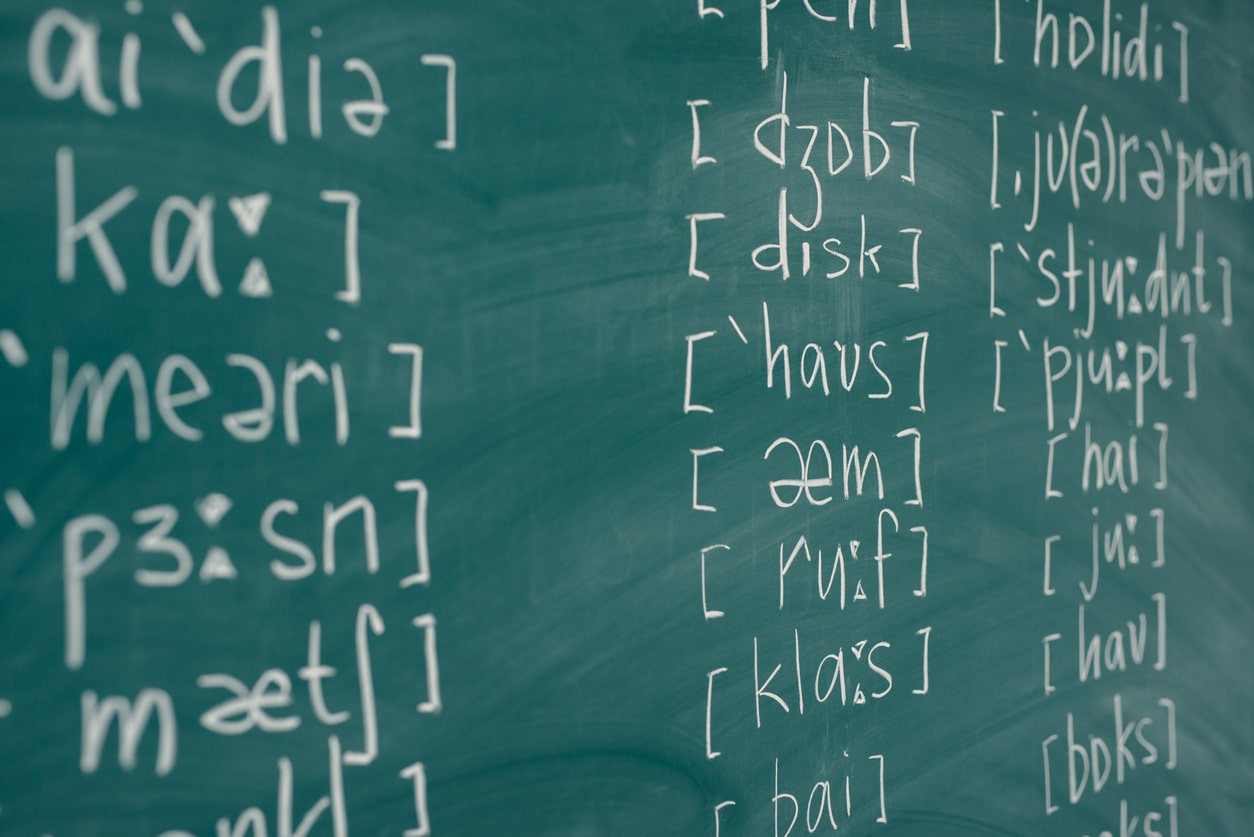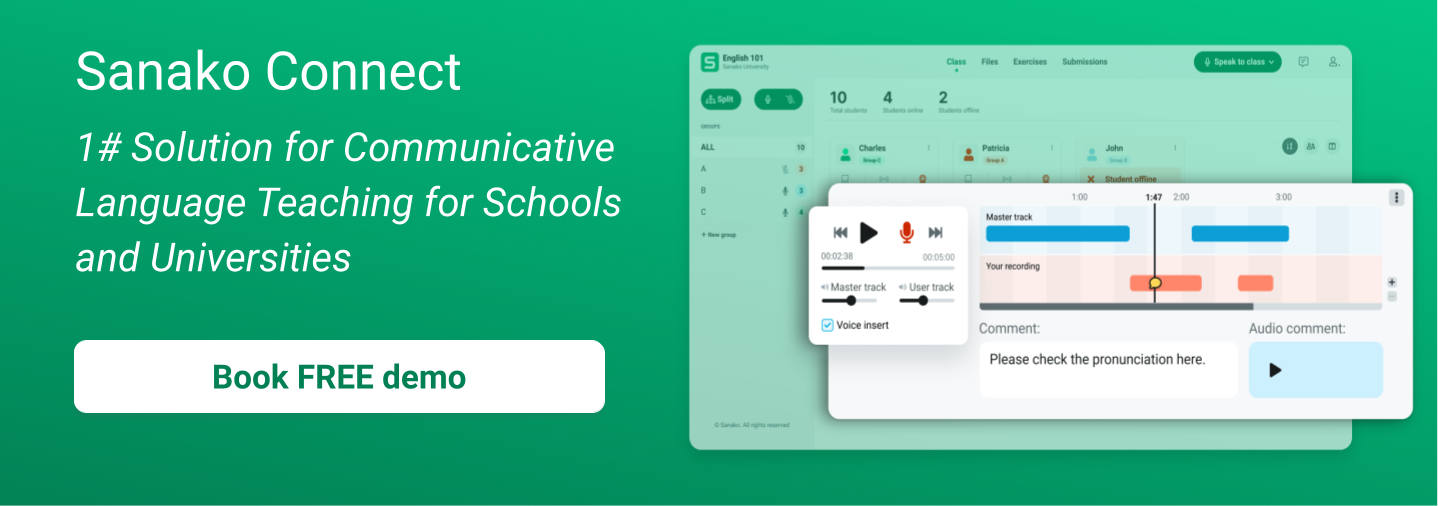Whether their ambition is to order an ice cream in Venice or to conduct a business meeting in Shanghai, for most foreign language learners the ability to speak clearly and confidently in their target language is the ultimate goal. Building pronunciation skills should therefore be a core part of any language learning course, given the influence it has on how much listeners can understand.
Yet teaching pronunciation is frequently overlooked – indeed on many CELTA or TEFL teacher training courses, the subject is not even included. But without clear pronunciation, it can be difficult to understand whether the speaker is sailing on a ship or a sheep or eating a pear or a bear!
This blog post focuses on providing inspiration to language teachers so they can ensure their learners are clear and confident communicators. Otherwise much of the skills and understanding built up in other areas of language learning is effectively worthless if the spoken word cannot be easily understood.
Learning to listen
It seems like odd advice but many teachers advocate that the journey to better pronunciation begins by listening to the target language being spoken and by building listening comprehension. This process starts by tuning learners’ ears to the sounds and rhythms of the language and can be easily done through online radio, TV, podcasts and recordings of native speakers.
At first, learners will probably understand very little, other than the names of people, places or notable items of national culture. But allied with some tailored vocabulary building, students do gradually become more familiar with the sound of the language and are able to pick out more and more words and phrases. They also build an immediate awareness of how the words sound. (You can learn more about how to improve your students’ listening skills in our other post here.)
A new alphabet
In some language classes, students might need to learn a new alphabet and new sounds before they even begin to learn their new language. This applies, for instance, to Arab, Chinese or Korean students when starting to learn English – everything is completely new! It may be helpful for these students to add some specific phonics lessons into the curriculum.
Phonics focuses on learning the individual sound of a letter or set of letters, vowels, and consonants when learning to read. It can be highly effective in helping learners to quickly understand the sound system of their new language. This includes intonation, how sounds are pronounced and how syllables / words are stressed. More broadly, if students can learn what sounds each letter or combination of letters makes, then it can also help to improve other core language skills (i.e reading, listening and speaking) at the same time.
Phonetically speaking
Building on the above, encouraging students to familiarize themselves with, use and refer to the International Phonetic Alphabet, or IPA, can go a long way to developing their pronunciation skills. Particularly as the IPA is widely used to provide a guide to pronunciation in many dictionaries and language textbooks.
The IPA breaks down all of the sounds that human beings can actually make into the smallest possible units of sound, or phonemes. It also renders these phonemes into consistent spelling patterns and IPA charts that map words in students’ L1 with similar phonemes in their target language can be found online. So pull together a list of all of the IPA sounds in the desired target language and practice saying them over and over. The IPA symbols can also be used anytime that new vocabulary is introduced to your students.
Word of mouth
Once students are familiar with the phonemes in their target language, it’s time to start saying words and sentences. It’s important for students to get familiar with how it looks and feels to say key words and phrases. They can also learn how each sound is made according to how wide their mouth is open and where their tongue is positioned. Pictures of this for each phoneme will also help students effectively mirror best practice.
These approaches can be helpful with sounds that have no close relative in the languages students already speak. In some cases students may even not be able to hear particular phonemes, but can be reassured that they are pronouncing them correctly if tongue, lips and teeth are in the right position and if breath is moving in the right way.
Reading aloud
Reading magazines, newspapers and books in the target language is, of course, invaluable for overall language skill development. But reading the text aloud can also help students to develop their pronunciation.
Recording themselves on their mobile phone’s voice memo or using a language learning software tool’s voice recording functionality is an easy way to do this. If they are using a dedicated language learning software with speech exercises or model imitation activities, students can even have a native speaker to emulate. This can be a very effective way to identify their own mistakes and to spot the phonemes, phrases or words they frequently struggle with. Some students may also benefit from the simple act of talking in their target language more frequently, which can often boost their confidence and fluency.
Practice makes perfect
Although there’s much debate about the value of continuous, repetitive drilling of students, there is undoubtedly a place for using drills to improve students’ pronunciation. They can be flexibly used to include either the whole class (everyone repeats the same phrase at the same time) or just individual pupils.
Whether students practice in the classroom or in their own time, it’s worth encouraging them to keep at it. Like any other physical skill, speaking a new language really does require lots of practice. It’s a cliche, but the more you practice the easier it gets, particularly if the sounds don’t exist in your native language!
How do Sanako products help educators to teach pronunciation?
Sanako’s language teaching software helps educators to improve their students’ foreign language pronunciation and oral communication skills. They enable educators to:
- Provide authentic speech models for students, who then record their own voice for comparison and receive immediate and automated feedback.
- Create specific pronunciation tasks using a wide variety of media including sound files, text, presentations, videos and/or web pages.
- Create groups of students to conduct conversation practice simultaneously. Teachers can listen in, give feedback in real-time and even record the individual group discussions for review.
- Provide detailed and time-coded feedback: A piece of audio feedback can be carefully placed next to specific points of the student’s recorded oral submission where their pronunciation needs attention.
If you’d like to find out more about how Sanako’s dedicated language teaching solutions could transform your approach to teaching pronunciation skills, please contact us now to arrange your FREE demo!


